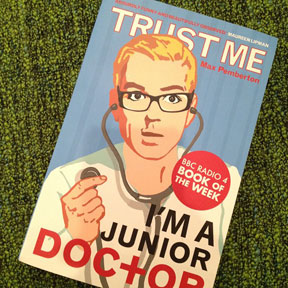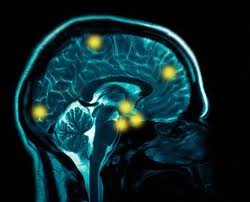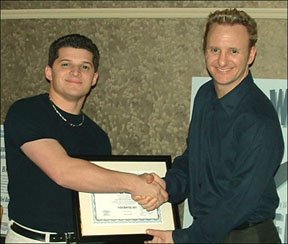Why Smart People Still Use Handwriting Analysis in 2013.
Written By Brenda Petty (Certified Handwriting Expert)
http://brendapetty.com/
Many smart people rely on handwriting analysis as a part of their weekly “screening” tool for both personal and business relationships.
If you have never had your handwriting analyzed from a Certified Handwriting Analyst, you might have the mistaken belief that this skill set is akin to astrology or palm reading. If you do think that, don’t express it in front of the thousands of psychology students and working professionals who have studied the new science…you might get slapped for your ignorance.
You wouldn’t take medical advice from someone who read one book on health; why would you judge handwriting analysis on one encounter with someone who read one book on graphology? You shouldn’t.

If you are lucky enough to have ever met a “Certified Handwriting Analyst”, you already know the “OMG moments” your handwriting reveals. If not, the following facts might open your mind up to consider learning more about scientific handwriting analysis for your business or personal life.
The popular phrase among 21st century analysts is “ Handwriting is Brain Writing.” It seems the brain research of Dr. Daniel Amen and other prominent neuroscientists have laid a new scientific foundation for the basis that your brain holds pathways and can change.

Both printed and cursive handwriting are physiological and psychological extensions of the brain pathways. The letter formations, strokes, slant, and even the pen pressure an individual uses are all attributable to the subconscious mind.
When one prints, more of the conscious mind is revealed and less of the unconscious. When one writes in cursive, it is the subconscious mind that is revealing the most valuable information. For this reason, professional handwriting analysts prefer to work with cursive handwriting vs. block printing.
“Based on my experience, cursive handwriting reveals 6 times more valuable personality information than printing alone. Ideally, I would have pages and pages of both print and cursive to get a full picture. But, if I could only get one or the other…it would be cursive every time.” – Bart Baggett, Founder of Handwriting University.com
To accurately determine personality traits from the handwriting, one would need mastery over at least 70 primary strokes and 30 advanced strokes. This could take from 3 months up to years to truly master with a low error rate. There are specific procedures used to measure a person’s slant and pressure (which reveal emotional expressiveness and emotional intensity).
Until recently, most kids in the United States and Europe were taught to write in cursive in school. In India and other countries, handwriting is still an important part of both school and business transactions. An interesting phenomenon occurs worldwide: even though people were taught using a variety of “alphabet systems” from Spain, India, USA, or Africa…the fundamental traits and methods taught by the American System remain accurate and effective, regardless of the location of the person’s home country. This is one reason this science has a faster “growth rate” outside of the United States than inside. It works in all Latin based alphabets.
As each individual child learns to write in cursive, there are other factors which begin to figure into the equation of how that child finally chooses to form his or her own writing. One of the key reasons is the emotional experiences that have registered in the neural pathways of the brain. For example, some individuals will desire to use circles to dot their “i’s” , instead of a single dot. This circle i-dot signifies a need to be creative and different. A slashed dot signifies emotional frustration and irritation. When the irritation goes, the i-dot changes. Amazing, isn’t it? These variations among the same letters are all representations of the unique thought processes that are occurring in the brain and being reflected in a person’s handwriting.
Through the past 200 years of graphology research, it was noticed that certain strokes made in the handwriting correlated with certain personality and character traits of the writer. From the complicated and confusing Spanish Graphology books of the 16th century to the Italian Graphology books in the 1930’s… the observations have been documented and the accuracy increased with each decade. Now, in 2013, the American Scientific System taught by Handwriting University International has a wide level of acceptance and accuracy from graduates age 14-84 and from Dallas TX, USA to Bangalore, India. The science keeps getting better.
Some key traits revealed in handwriting can include:
Intelligent, stubborn, loyal, honest, afraid, argumentative, ostentatious, diplomatic, anal-retentive, etc.
These are just a few of the 100+ character and personality traits that handwriting reveals. In this generation of those who study handwriting, we are also learning new traits and how to stack traits for a greater accuracy in understanding an individual.
Below is a video of how two traits can be combined to make a third more “advanced” trait.
What Handwriting Analysis Cannot Reveal:
A handwriting analyst is not a fortune teller. A handwriting analyst cannot predict the future. A handwriting analyst will not be able to tell someone if they will ever get married, be a millionaire, or win the lottery. The books all agree you cannot tell with scientific certainty: age, gender, nationality, skin color, left or right-handed, or religious beliefs.
However, a trained analyst can tell someone if they would be compatible with another person in marriage or other relationships. She can spot “success traits” that successful people exhibit…just from the handwriting. Furthermore, a “certified handwriting analyst” can reveal to an employer whether or not the person applying for a job might be a good fit or a bad hiring decision.
Does the individual’s personality fit the job description? No one can assure that all problems in the work place can be eliminated, but the handwriting can reveal valuable insight.
A good handwriting analyst can compare personalities, problem-solving abilities, interpersonal skills, how one would fit into a team situation, how one reacts under pressure, and one’s emotional development relative to maturity and consistent actions.
There are many reasons for analyzing someone’s handwriting…however, an expert analyst uses the same techniques and skills to ascertain each individual’s writing and arrive at conclusions that are relative to the time of the handwriting sample. Happy writing!!!
Handwriting Expert,
Brenda Petty
This article co-written by Bart Baggett
This article edited for typos and grammatical errors by Lahna Harris.

